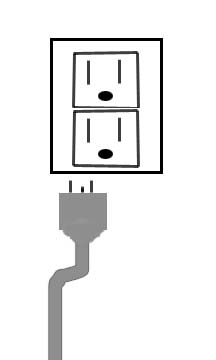
This page is devided up into 3 sections
[General Information] [Patches] [Modification!]
This is not some factory exaggeration speech about the 505. This will be the honest truth about the performance of the Zoom 505, and some of the specifications. I have had my 505 since September of 97', so I have had a little time to mess around with it and here are my thoughts about it:
The presets suck.. Luckily you can change all 24 of them.
The delay, hall, room, flanger, and phaser are the high points on the unit.
Compressor is too noisy as with distortion at high gain settings. See my mod tips for some help with that.
All around it is worth the money for the amount of effects.
The EQ and Zoom noise reduction are good.
This thing is too noisy on my Solid State amps but, on my tube amp it is silent (almost).
Specifications
24 user editable presets
compressor, limiter, pedal wah (expression needed), auto wah
Acoustic, Rhythm, Overdrive, Distortion (thrashy), blues, fuzz, lead, and metal distortion
settings
Zoom Noise Reduction (works all right)
EQ (4 band) phaser
Chorus, Flanger, Doubler, Stepper (auto appregio), Pitch shifter
Delay, Hall, And room reverbs.
An optional expression pedal and bank switch (check mod section to learn how to build 'em)
Patches
I don't have any typed up right now.. but, when I do have them they will be general
patches, no "This is the effect for the Enter Sandman solo"..
| COMP | DIST | GAIN | ZNR/AMP | EQ/PHASE | MOD | DLY/REV | LEVEL | COMMENTS | PATCH TYPE |
This section must be used only by experienced people. If you don't know how to solder, learn and come back. These tips are pretty straight forward and I have included pictures to help you out. Please feel free to mail me with any other mod tips!
TIP 1: Noise... This thing is more noisy that a barrel of monkeys rolling down a rock wall. The thing that needs to be down to to ground the thing out better.. Here is a picture to help me demonstrate:

The grounding wire is what we are after.. here are the step by step tips:
OK, now what we are doing is replacing the cheap excuse for a ground wire with a speaker wire.. here is what you will need:
Crimp and solder the lug onto the speaker wire.. The wire only needs to be 4 inches or so.. make sure you don't burn off too much of the insulation. now solder the other end too the metal plate.. near the screw hold preferably. now screw the board screw back in through the lug.. You know, make sure lug is grounded out against the board contact. Make sure that the lug is touching no other points on the board except the tin ring around the screw hole, that is the board's grounding point.
Put the cover back on and you should be all set.
TIP 2: Reducing the noise even more!
This may be a little more simple depending on your aptitude. What we are going to
do is use a 3 prong wire power supply. Find a power supply that has a 3 prong
connector or solder on in place. connect the 3'd lead (ground) to the chassis of the zoom.
this will provide an earth ground for the 505.

TIP 3: How to build that damn expensive expression pedal. Here is how it works. The 505's "Control" socket (located next to the input) is a stereo jack. here is a picture to help explain:

Pos1 is the positive lead for the expression pedal, and pos2 is for the bank switching device. The polarity is not very important. What you will need to do is either build a volume pedal or buy a cheap volume pedal.. they run about $35 bucks.. (or a lot less) and the switch is hard to work.. what I understand is it must be on all the time (closed) and for the bank to switch it needs to be turned off (open)., now that is the trick.. I'm pretty sure that they make buttons that are momentarily OFF switches.. as in when you press it in it opens the circuit (disconnects) and when you release it will close the circuit (short). This switch is not standard so check your local Radio Shack or other electronics supply stores for one...
Zoom probably makes their equipment that way so you can't shortcut around it and make your own expression pedal, but I figured it out. If you haven't noticed that the control is VERY sensitive to movement. Even a fraction of an inch. I have a theroy that it might be in fact a variable capacitor and not a varible resistor... I will keep you posted. It was 2 o'clock in the AM so I wasn't about to bother with it.